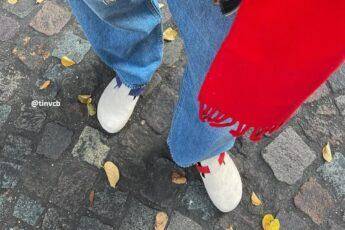What Is Fashion Industry Logistics?

With its ever-changing trends and styles, fashion often captures our attention on the surface. Yet, beneath the glamour, a less visible but essential world exists—fashion industry logistics.
The intricate system ensures the clothes we love make it from design to our closets. In this article, we’ll unravel the simplicity of this crucial yet often overlooked aspect of the fashion world.
Let’s explore how fashion industry logistics keeps the fashion cycle running smoothly.
The Importance of Fashion Industry Logistics
Fashion is characterized by its fast-paced nature, where trends come and go in the blink of an eye. Consequently, efficient and agile logistics are imperative to meet consumers’consumers’ ever-changing demands. In this competitive market, any hiccups in the supply chain can translate to missed opportunities and financial setbacks for fashion brands. Now, considering the role of routing in this complex process, routing apps like Route4Me have become essential as they streamline the transportation process and contribute significantly to cost reduction and timely deliveries.
Key Components of Fashion Industry Logistics
1. Design and Production Planning
Before a garment reaches the shelves, it undergoes a meticulous journey, starting with design and production planning. Fashion designers conceptualize their creations, and logistics professionals work together to plan the production process. This involves sourcing raw materials, negotiating with suppliers, and ensuring the production timeline aligns with market demands.
2. Sourcing and Procurement
The global nature of the fashion industry means that materials and components may come from various corners of the world. Logistics teams are responsible for sourcing these materials efficiently, considering cost, quality, and ethics. This phase also involves procurement negotiations, which can impact the overall cost and sustainability of the final product.
3. Manufacturing and Production
Once materials are procured, they move to the manufacturing stage. Logistics play a crucial role in orchestrating the movement of materials between different manufacturing facilities, ensuring that each step in the production process is seamlessly connected. This phase demands precise coordination to meet tight production schedules and maintain quality standards.
4. Distribution and Transportation
The completed products must be transported from manufacturing hubs to distribution centers and, eventually, retail outlets. Fashion industry logistics encompass selecting the most efficient transportation methods, managing inventory levels, and optimizing routes to minimize costs and delivery times. This phase is critical in meeting consumer expectations for fast and reliable delivery.
5. Retail and E-Commerce Operations
Whether through brick-and-mortar stores or online platforms, the final leg of the logistics journey involves getting products into the hands of consumers. This includes managing inventory in retail outlets, handling returns, and ensuring that e-commerce platforms are seamlessly integrated with the broader supply chain.
Challenges in Fashion Industry Logistics
- Seasonal Fluctuations: The fashion industry operates on a seasonal cycle, with distinct peaks and troughs in demand. Managing inventory levels and adjusting production schedules to align with these fluctuations requires careful planning and adaptability.
- Sustainability Pressures: As consumer awareness of environmental issues grows, there is increasing pressure on fashion brands to adopt sustainable practices. This includes sustainable sourcing, ethical manufacturing, and eco-friendly packaging, all adding complexity to logistics operations.
- Globalization Complexities: The global nature of the fashion supply chain introduces complexities related to cross-border logistics, customs regulations, and geopolitical factors. Skillfully navigating these complexities requires a deep understanding of international trade dynamics.
- Rapidly Changing Trends: Fashion trends can emerge and fade quickly, making it challenging for logistics professionals to predict and respond to shifting consumer preferences. This unpredictability requires agile supply chain strategies and quick decision-making.
In A Nutshell
The logistics of the fashion industry quietly propel the dynamic and ever-changing world of fashion. From the design and production planning phases to the concluding stages of retail and e-commerce operations, logistics experts conduct a harmonious arrangement of processes to guarantee the seamless delivery of fashion products to consumers.
Share via:





Leave a Comment